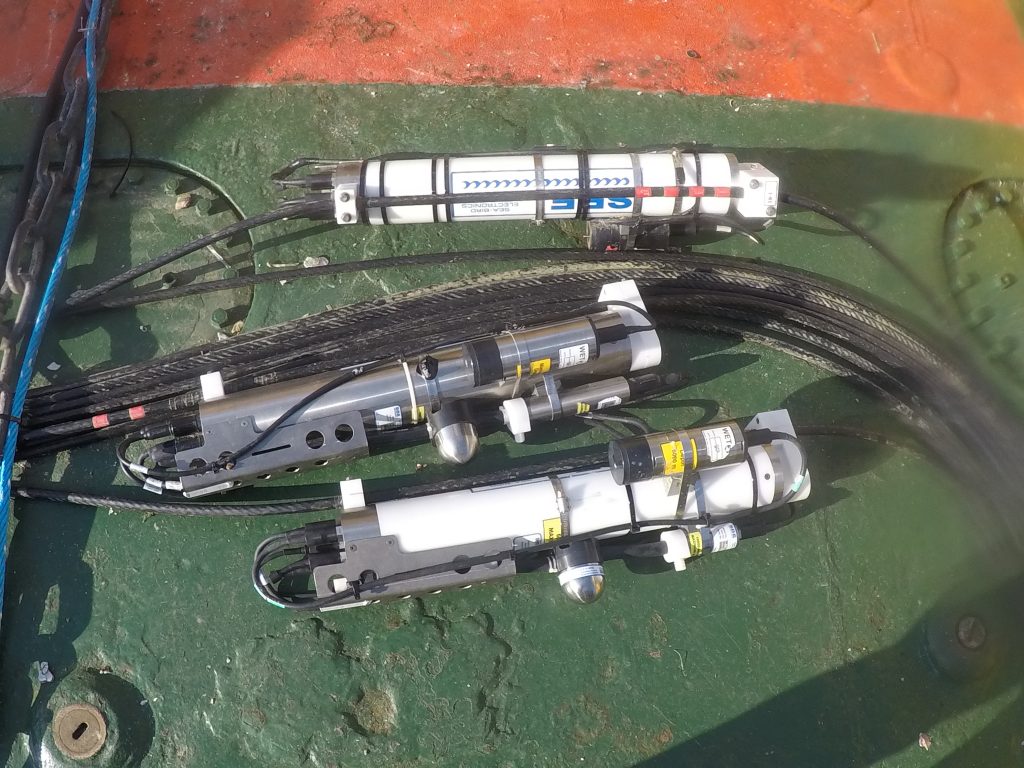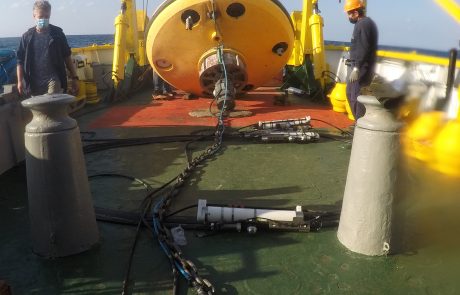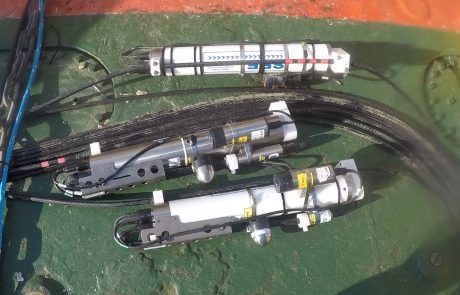Project Description
Cretan Sea / E1-M3A
SUMMARY
The E1-M3A marine observatory is a pioneer station, the first open-ocean buoy in the Mediterranean deployed in January 2000 and currently part of the POSEIDON network since 2007. The Poseidon system operates a network of fixed measuring floats, which are moored at various locations in the Aegean and Ionian seas delivering near-real-time observations on important marine and atmospheric parameters. The oceanographic buoys constitute the backbone of the POSEIDON system and they are linked to both global and regional networks such as the OceanSITES and M3A’s respectively. In particular the POSEIDON E1 M3A buoy (WMO 61277) is the founder component of the Cretan Sea observatory complemented with several other platforms such as glider, FerryBox and a coastal buoy and is currently the most heavily equipped physical–biogeochemical observing site of the POSEIDON system.

General information
Location: Mediterranean Sea, Hellenic Arc
Distance from land: 24 NM
Max water depth: 1400 m
Date 1st deployment: January 2000
Supported by: Hellas
Operated by: HCMR
Website: http://poseidon.hcmr.gr
Status: running
Regional Team Leader: George Petihakis, HCMR
Scientific objectives
The E1-M3A is considered a reference point for monitoring open-ocean biogeochemical processes (including air–sea interactions) of the Eastern Mediterranean and part of the operational oceanography observing system developments supporting the MSFD implementation in the Mediterranean Sea. Consolidating on the long experience of physical variables monitoring, the objective of the observatory has been expanded in the last few years to include regular monitoring of the epipelagic ecosystem and the associated biogeochemistry.
Description of the infrastructure
The E1-M3A station is located 24 nautical miles north of the island of Crete anchored at a depth of 1,400 meters. The Cretan Sea is an area of intermediate and/or deep-water formation dominated by multiple scale circulation patterns and intense mesoscale variability. Such areas of water formation are key locations for monitoring of the Mediterranean biochemical functioning. The wintertime convective mixing of the water column and the exchanges of water and mass (diluted, suspended or near-bed) with the adjacent Levantine and Ionian Seas through the straits of the Cretan Arc, make the Cretan Sea the poorer in nutrients and the richer in oxygen among the principal basins of the Mediterranean Sea. Among the extensive suite of measurements (atmospheric and marine) there are CTD data down to 1000m, Chl-A, DO and turbidity data for the first 100m of the water column while the recent addition of surface pH and pCO2 sensors further expanded the biochemical component of the station.




